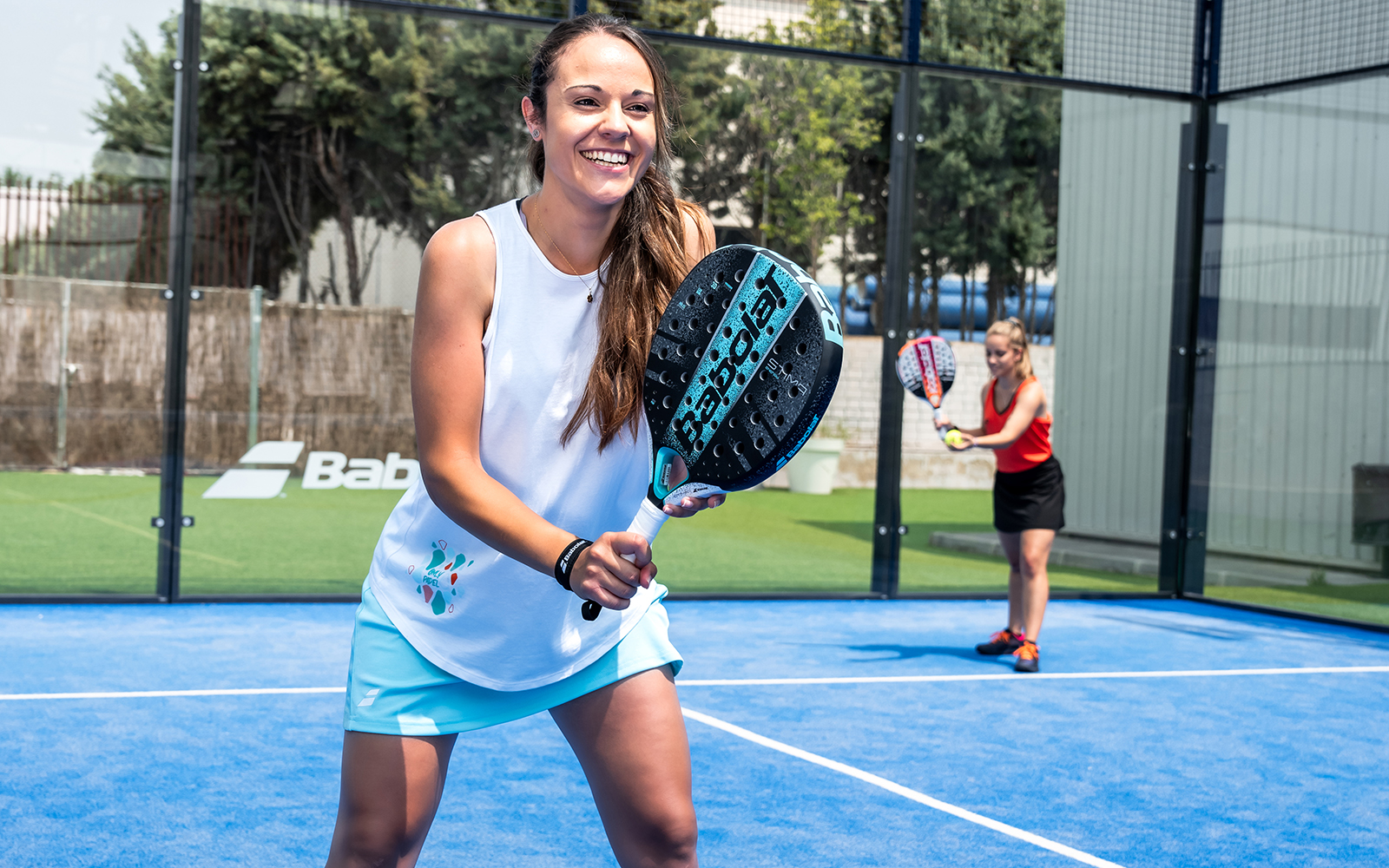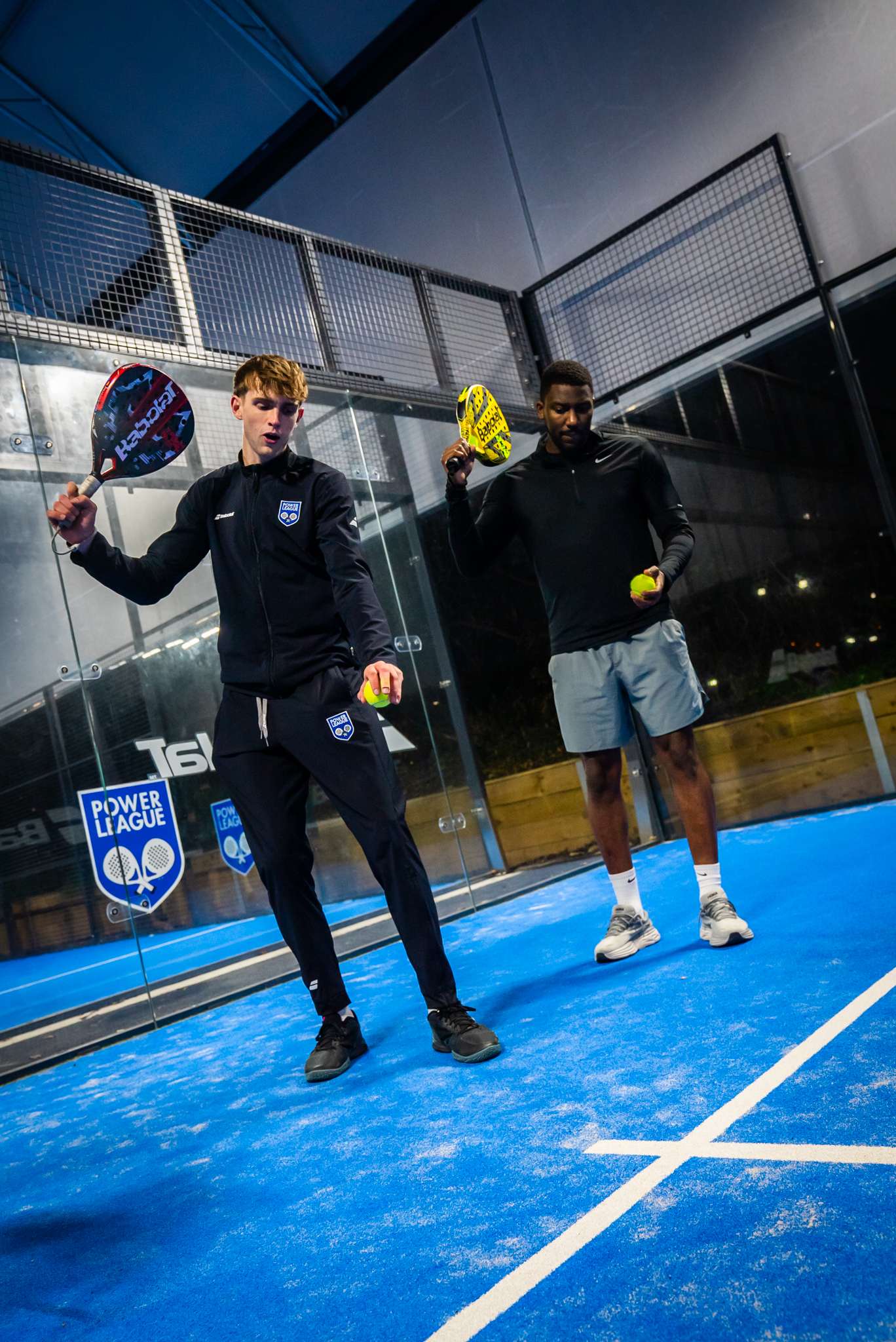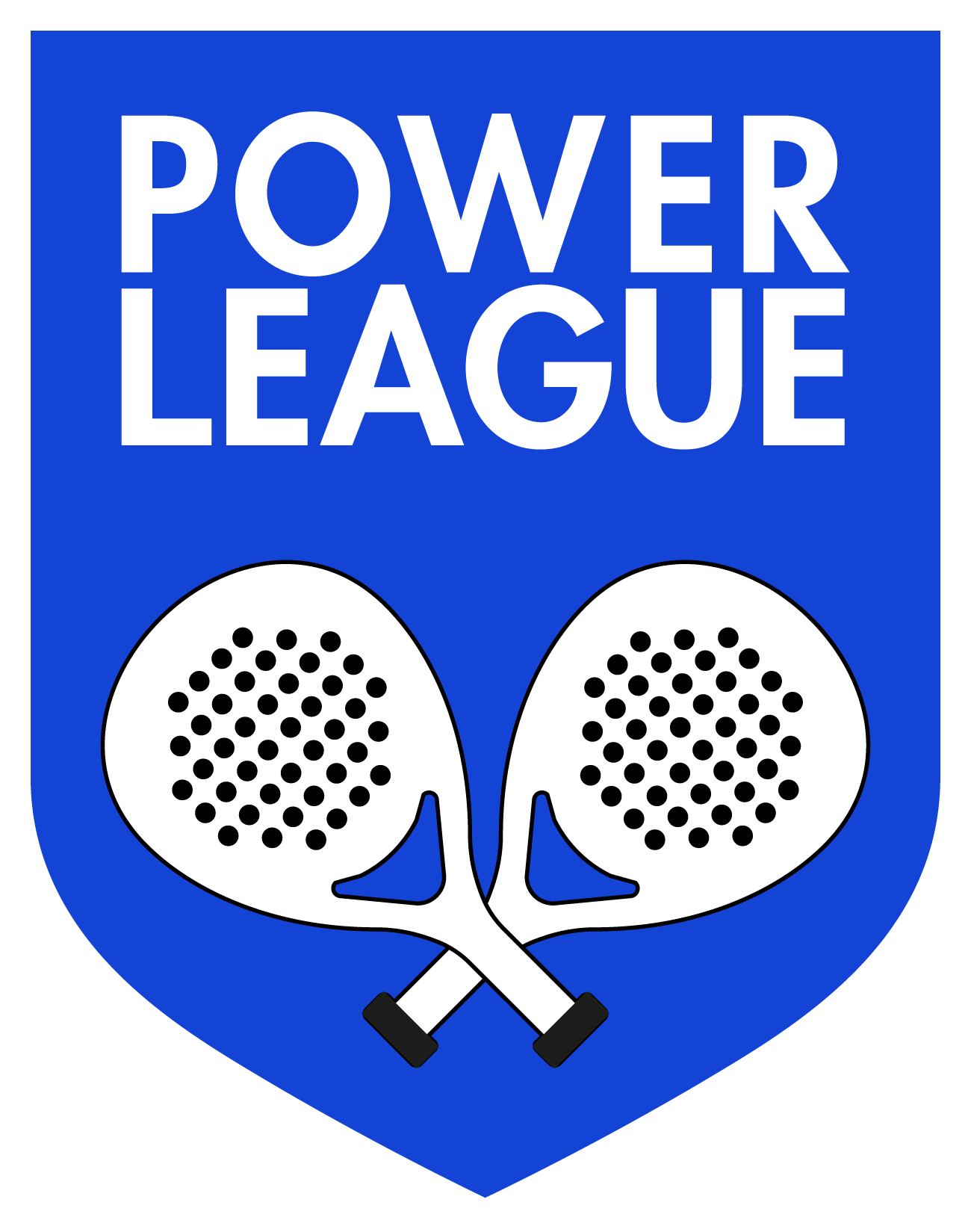How to Play Padel: A Beginner’s Guide with Expert Tips
Welcome to your ultimate beginner’s guide on how to play padel, a vibrant and dynamic racket sport that combines the best of tennis, squash, and badminton. Whether you’re completely new to the game or looking to improve, this guide will provide you with insights from Powerleague Padel expert Goncalo Alves.
Get ready to hit the court with confidence as we break down the essentials for playing effectively, mastering techniques, and having fun along the way.
1. Getting to know the court
The court is your new playground: an enclosed space featuring glass and steel mesh walls. These aren’t just boundaries—they’re a strategic element of the game. Imagine them as your secret weapon, enabling clever rebounds and unpredictable shots.
Much like in squash, the walls play a key role. The court’s compact design demands quick thinking and even quicker reactions to outsmart your opponents. Service boxes, similar to tennis, are marked on either side of the court for serving.
Goncalo’s Tip: “Think of the walls as an extension of your game—they’re just as crucial as your racket. Learning to use them smartly is one of the biggest steps towards getting good at padel.”
2. Serving Basics
Serving in padel is straightforward but unique. Unlike tennis, serves are underhand and must land diagonally in your opponent’s service box. Here’s how to get it right:
- Stand between the service line and the back wall.
- Drop the ball and hit it below waist height after a bounce.
- Aim to send it into your opponent’s service box.
- A let is called if the ball hits the net and lands correctly, allowing you to retake the serve.
- The serve is out if it hits the wire mesh directly.
Goncalo’s Tip: “Keep your serve simple and consistent. Focus on accuracy rather than power; good placement will make it hard for your opponent to respond effectively.”

3. Playing the point/rally
Once the ball is in play, padel becomes a thrilling blend of strategy, agility, and teamwork. Here are some essentials:
- Bounce or Volley: Decide whether to hit the ball after a bounce or take it directly in the air.
- Use the Walls: After bouncing, the ball can hit your side’s walls before you return it, adding an element of unpredictability.
- Mix Your Shots: Alternate between direct net shots and wall-assisted rebounds to keep opponents guessing.
Goncalo’s Tip: “Stay light on your feet and always be ready to reposition. The ball’s rebound off the wall gives you extra time, so use it wisely to set up your next shot.”
4. Scoring SYSTEM
Padel uses the familiar tennis scoring system:
- First point: 15
- Second point: 30
- Third point: 40
- At 40-40 (deuce), players must win two consecutive points to secure the game. Some matches use a ‘golden point’ rule at deuce, where the next point decides the game.
To win a set, a team must win six games with a two-game margin. A tiebreaker resolves sets tied at 6-6, and the first team to win two sets takes the match.
Goncalo’s Tip: “Don’t be discouraged by deuce. Stay focused on each point and communicate with your partner—teamwork is key to overcoming tight situations.”

5. Mastering the walls
The walls are what make padel truly unique. Mastering their use adds depth to your game and keeps opponents on their toes.
Key Wall Tips:
- Angles and Rebounds: Practice rebounding shots off walls to add unpredictability.
- Experiment: Familiarize yourself with different wall angles and trajectories during practice sessions.
Goncalo’s Tip: “The wall can be your best ally or your worst enemy. Spend time practising wall shots to unlock more strategic options during matches.”
6. differences between padel and tennis
While padel and tennis share similarities, key differences make padel distinct:
- Court Size and Walls: A padel court is smaller (10m x 20m) and enclosed, incorporating walls into gameplay. Tennis courts are larger and open.
- Racquet Type: Padel uses solid paddles without strings, creating a unique playing experience compared to tennis racquets.
- Team Play: Padel is almost exclusively doubles, promoting teamwork and communication.

7. Training and development tips
Improving your padel game requires focused training in these areas:
- Agility and Fitness: Develop quick movements to navigate the smaller court and react to wall rebounds.
- Partner Coordination: Doubles play thrives on seamless teamwork and positioning.
- Technique: Perfect your serve, volley, and smash for versatile play.
Goncalo’s Tip: “Padel is a game of adaptation. Train your reflexes, stay aware of your surroundings, and learn to anticipate the ball’s movement—these skills will elevate your gameplay.”
8. Let’s hit the court
Now that you know how to play padel, it’s time to hit the court and put your skills into action. Remember, padel is a sport of strategy, teamwork, and fun. With expert tips from Goncalo Alves, you’re equipped to take on opponents and enjoy the fast-paced excitement of this growing phenomenon.
See you on the court!



